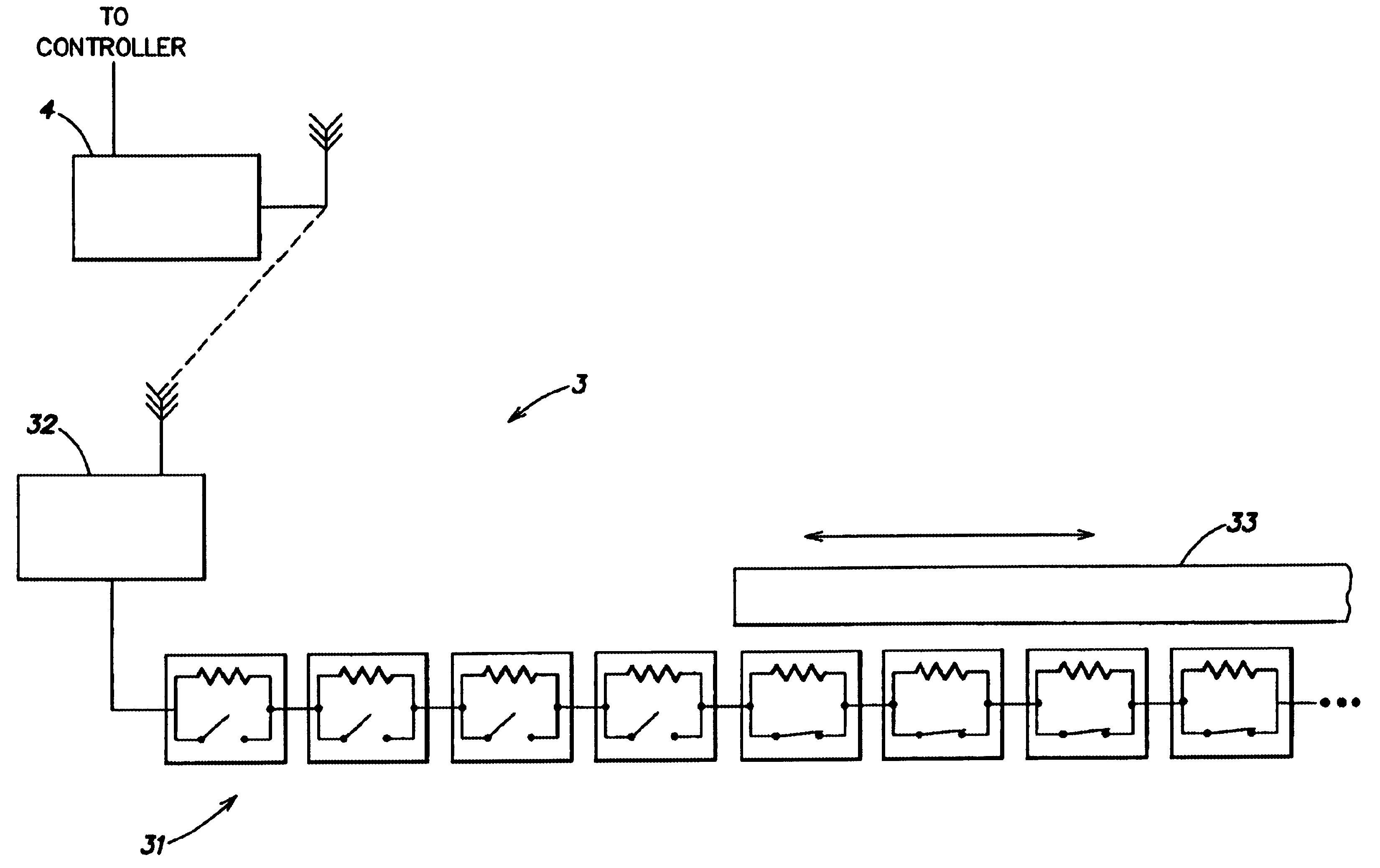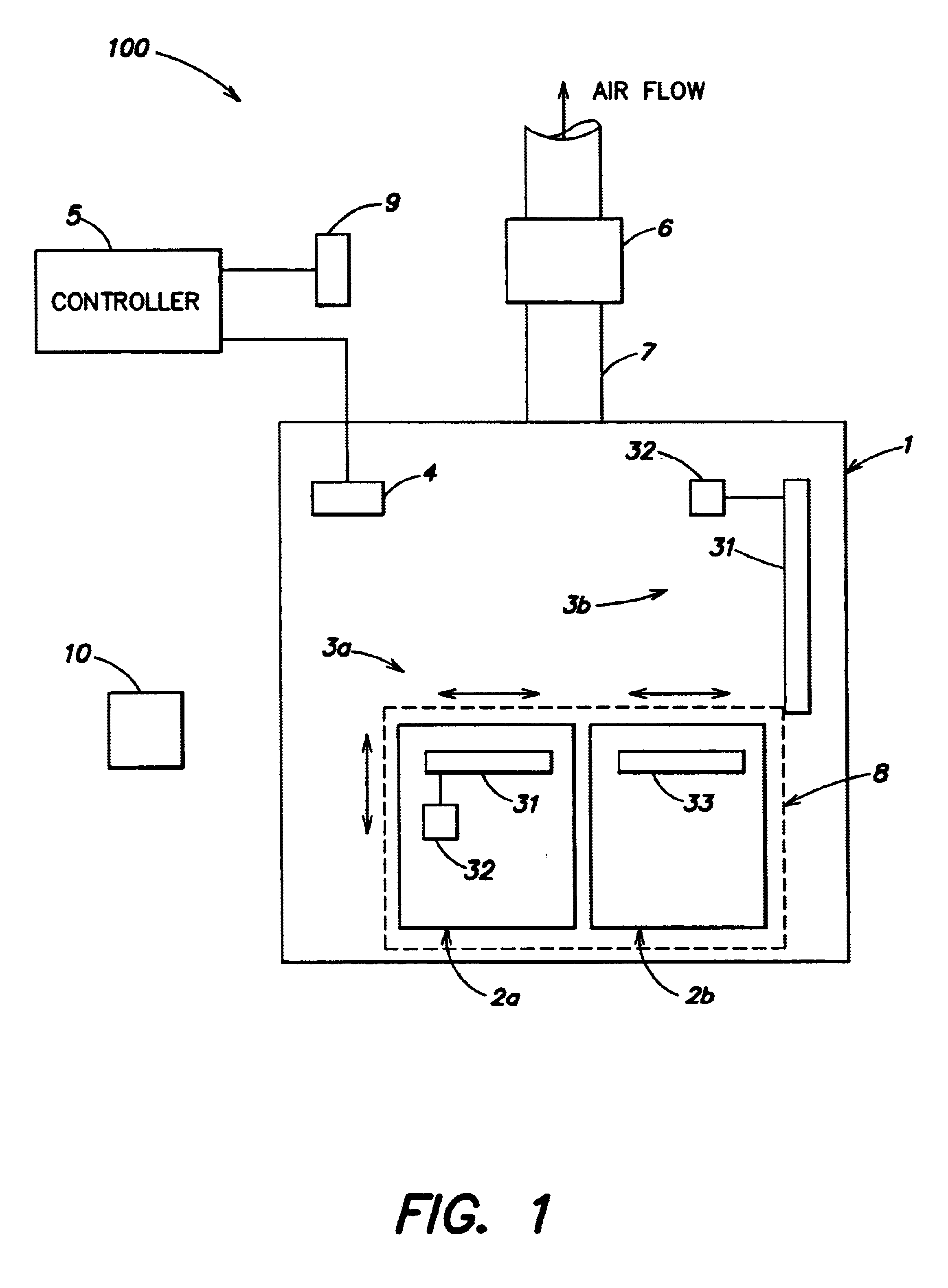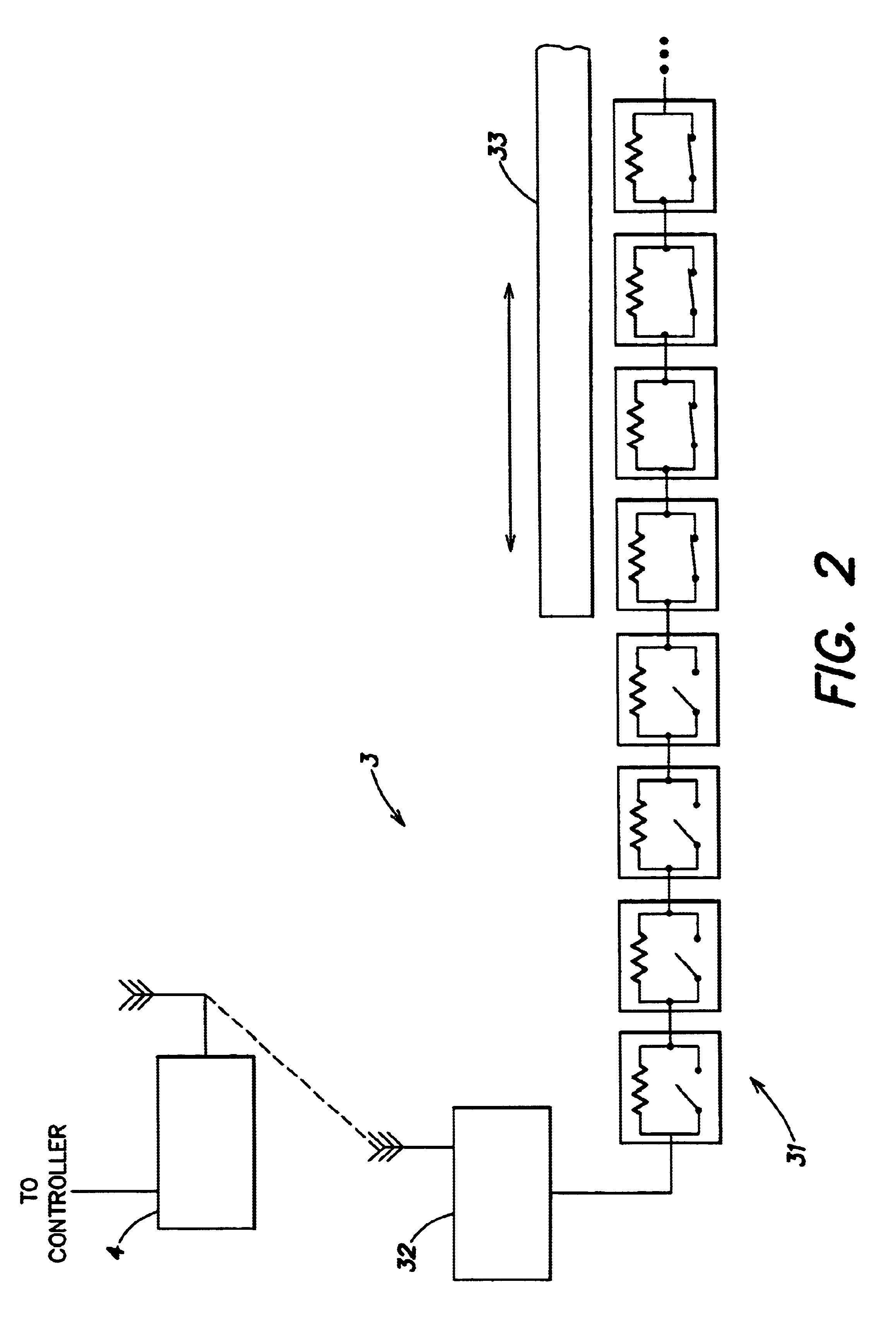Wireless communication for fume hood control
a technology of communication and fume hood, which is applied in the direction of ventilation systems, heating types, stoves or ranges, etc., can solve the problems of contaminants inside the hood, the airflow through the opening or face velocity is too low, and the hood is kept open for a long time, so as to reduce the size of the hood opening
- Summary
- Abstract
- Description
- Claims
- Application Information
AI Technical Summary
Benefits of technology
Problems solved by technology
Method used
Image
Examples
Embodiment Construction
[0017]Various aspects of the invention are described below with reference to illustrative embodiments. However, it should be understood that the invention is not limited to those embodiments described below, but instead may be used in any suitable system or arrangement. For example, aspects of the invention are described below in connection with a fume hood having movable sashes to adjust a hood opening. However, aspects of the invention may be used with other fume hood types, such as those having a fixed hood opening and a sensor that detects a change at the hood opening, such as the presence of a person using the hood, the movement of air or other objects at the hood opening, etc.
[0018]As discussed above, in one aspect of the invention, a wireless signal including information regarding a containment condition at the fume hood opening is sent to a fume hood controller so that at least airflow through the hood may be controlled based on the information. Sending such information by w...
PUM
 Login to View More
Login to View More Abstract
Description
Claims
Application Information
 Login to View More
Login to View More - R&D
- Intellectual Property
- Life Sciences
- Materials
- Tech Scout
- Unparalleled Data Quality
- Higher Quality Content
- 60% Fewer Hallucinations
Browse by: Latest US Patents, China's latest patents, Technical Efficacy Thesaurus, Application Domain, Technology Topic, Popular Technical Reports.
© 2025 PatSnap. All rights reserved.Legal|Privacy policy|Modern Slavery Act Transparency Statement|Sitemap|About US| Contact US: help@patsnap.com



